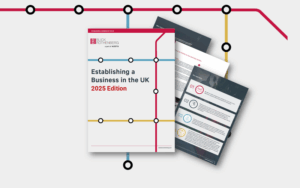Upon being awarded an interest in a carry vehicle, first an investment manager with US and/or UK tax exposure needs to consider certain preferential elections. These elections (Section 431 for UK tax and Section 83(b) for US tax), ensure that the carry is taxed at the preferential Capital Gains Tax rate and that it is not an extension of employment income (if an employee) or partnership income (if a partner). These elections have the effect of taxing the award at the unrestricted market value at the date of award. Given the nature of a typical right to carry, this may be relatively low. You should work with your employer to ensure the employee and employer treatments are consistent. It is worth noting that both elections have tight deadlines.
The Section 431 election (UK) is a joint election between the employer and employee and must be signed within 14 days of the award of the carry. It does not need to be submitted to HMRC but must be kept on file. Partners may wish to protectively file a Section 431 election, particularly if they become a director of the fund in question further down the line which could subject them to employment rules.
The section 83(b) election (US) does not distinguish between partners and employees; therefore, it affects all investment managers who are US citizens, green card holders or resident aliens. This election has to be filed with the IRS within 30 days of being awarded the carry.
Being awarded carry part way through a fund’s life cycle rather than in its infancy (when it has minimal value) means that upon the filing of the aforementioned elections there may be an income inclusion (at ordinary tax rates i.e., 45% UK rate which can offset the 37% US tax rate) on the difference between the fair market value and the price paid at the date of the award.
How to mitigate double tax on carry?
As mentioned in the previous article, carry is taxed on an ‘accruals’ basis in the US versus a ‘receipts’ basis in the UK. If you are a US taxpayer residing in the UK, the most efficient and prudent way to negate double tax is to make advance tax payments to HM Revenue & Customs (HMRC) on an annual basis, by 31 December. This allows UK tax to be claimed as a foreign tax credit on the corresponding US return. The carry, which is taxed as it accrues and reported annually on a Schedule K-1, will be sourced foreign so that the income and credits align. Note that this applies for regular US tax, not the 3.8% Net Investment Income Tax (NIIT), which cannot be offset by foreign tax credits.
This planning is particularly useful for US taxpayers who claim foreign tax credits on the ‘paid’ basis (which is the majority), whereby foreign tax credits are included on the US return in the year in which the foreign tax is physically paid irrespective of when it is due.
A fund’s Limited Partnership Agreement typically includes a clause which allows annual tax advances to be made to cover the US tax charges, even though the carry is not due to be paid out. Should the hurdle rate be met, and the carry is eventually paid, it will be reduced to account for the early distributions covering the dry tax.
From a UK tax perspective, when the carry finally pays out, the bulk of the UK tax will already be covered by the credit sitting in the online account with HMRC. These are the cumulative payments made on an annual basis to frank the regular US tax payable in respect of the carry allocable to the taxpayer each year per the Schedule K-1 from the fund.





















